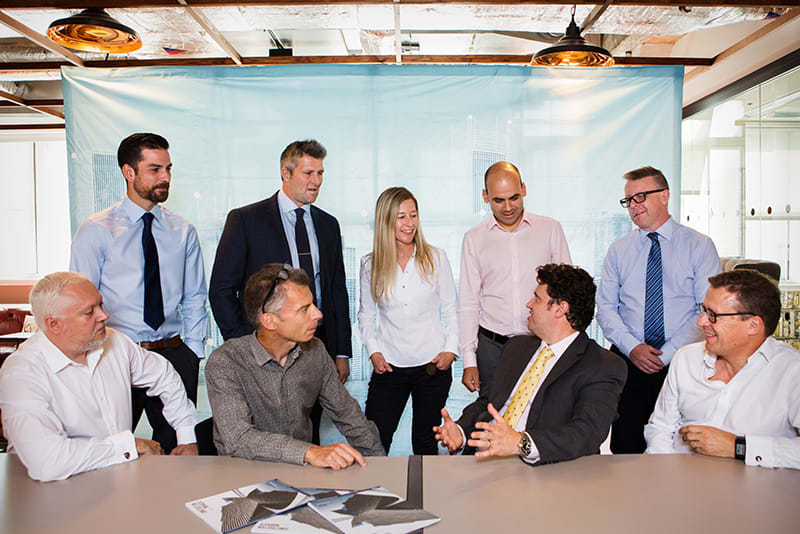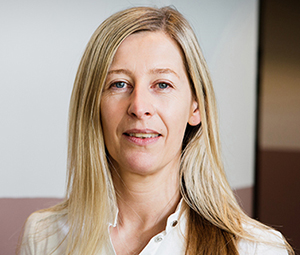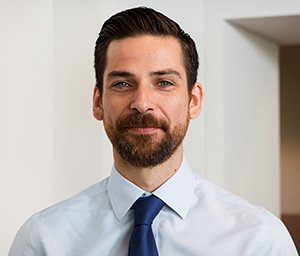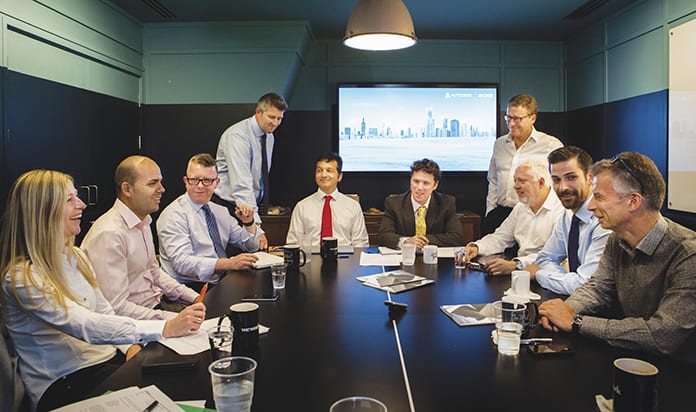As the digital phenomenon continues its march, more and more sectors of the economy are being disrupted. A CM roundtable, held in conjunction with Autodesk and the CIOB, explored the shape, nature and timing of tomorrow’s disrupted industry, and what companies must do to prepare. Denise Chevin chaired the debate. Photography by Julie Kim.
Denise Chevin: Where are we along the path to digital transformation? Is the pace of adoption accelerating?
Malcolm Clarke: We have had a steady increase in digital adoption the past few years but this year we are suddenly seeing a 60% upturn only halfway through the year. We have been developing things and running beta tests on site for the past few
years so it’s now come to fruition – now people see it working, it’s changing their perspectives.
Paul Connolly: We’ve seen a similar trend. BIM was a fashionable word but the barrier was that designers hadn’t provided a model so we had to start at stage 3 or 4, which is a cost and a barrier straight away. Now we are seeing a lot more projects coming in 3D format which is a great step change. We are seeing the FM side changing as well, as people want information on how the building is running.
Our biggest trend is trying to train our staff in use of BIM in the field, so construction managers know how to use the model.
Mike Beckett: We have seen the business opportunity. It’s giving us competitive margin – our returns for the past four years are three times the industry average. We are now going through a training programme engaging with the supply chain and staff up and down, from architects to consultants to specialists with some great results.
One of our supply chain – a bricklayer – has just been to one of our sessions where we explained what BIM was and the effect it had. The MD of that firm is now sending people in his business to our training sessions. That is the biggest change: if it’s not a tidal wave then it’s certainly a disruptive ripple.
Felipe Manzatucci: The field – and knowledge and understanding – of what digital can do is levelling so that competitive advantage might not last long. Before it was a nerdy thing – only some people knew how to use the tools – but now we can explain what it can do for the business. It’s no longer a tool, it’s about the bottom line and collaborative behaviour.
Stefan Mordue: People are looking for more than monetary gains – they are looking at what it can do for sustainability and H&S. We are looking at how we can use data in different ways.
Kirsty Lever: We are a very traditional building contractor so our workforce doesn’t want to embrace it and a lot of our clients don’t want to embrace it at all – but that’s more that they don’t want to pay for it. It’s a brick wall for us.

The panel

Standing (l-r): Andrew Gamblen, digital manager, Willmott Dixon; Paul Connolly, technical services director, Mace; Kirsty Lever, regional construction manager, Beard; Felipe Manzatucci, digitalisation director, Skanska; Mike Beckett, managing director, Hill Bespoke
Seated (l-r): Mark Norton, head of BIM, ISG; Andrew Pryke, managing director, BAM Design; Stefan Mordue Regional consultancy manager at i3 by Aecom and head of CIOB Special Interest Group on Digital Technologies & Asset Management; Malcolm Clarke, managing director, Baxall Construction
Not pictured: Dominic Thasarathar, Autodesk’s primary thought leader and evangelist for the Construction, Energy and Natural Resources sectors; Denise Chevin, editor, BIM+

MB: But fundamentally the client is missing out as it’s about saving money. Our site managers who have embraced it are now saying it feels like cheating – they are handing over without any fuss, everything is better organised. They are able to use mobile technology to sign stuff off. We handed over a school recently with zero defects. Our site manager was watching cricket with me the next day. He said it was so stress free.
Attitudes are changing. It’s the next generation who will make it happen.
Andrew Pryke: Buildings are still being delivered 50% late and 50% over budget and there are still defects on site. Productivity has only increased by 1% in the last 20 years, so the industry is ripe for takeover. Michael Marks [founder of Katerra, an offsite construction business in the US] is coming in from Tesla saying the industry is rubbish and they can take it over and change everything. We have to move forward rapidly as otherwise other industries will take over.
DC: It’s easier to come from outside the sector and disrupt. How do traditional businesses change to keep pace?
Andrew Gamblen: At the start of BIM there was a lot of resistance, but by focusing on what it is trying to do – the data management – it then acts as an enabler for everything else.
All of a sudden in six to nine months there has been huge uptake from everyone – supply chain and internal people. Early adopters who tried and failed on certain things but succeeded on others are now working with new teams and saying what they’ve done and it starts organic growth. People on site and in our teams are leading it and they want to do it, which has made uptake very fast. Pretty much every project – even estimators are asking for digital.
AP: Because construction is such a slow-moving industry there was slow adoption but as people picked it up and gave developers like Autodesk feedback, it means it’s got progressively better and it’s now reached the point where the hardware and software is at a usable state. With that now tying in to other platforms where you have data analytics, so you have the possibility of a big data warehouse where you can have the data metric and live updates.

Kirsty Lever: Change should be client led
PC: The need for change is based on productivity and cost. The pull from site is if we carry on the traditional way we will be 20% longer than intended. The pull is the project asking how we get better and the digital transformation is definitely creating the pull from the project.
DC: What’s been the impact of digital technologies on the construction site and are there still barriers?
SM: Technology adoption and uptake isn’t the issue. The biggest barrier to adoption is more fundamental than that. It’s a corporate change that’s needed. There are a lot of sites where internet and mobile phones are banned. The more fundamental way we think is the thing that needs to change.
PC: We just did our first 360 Field first job. The client was adamant he didn’t want any asset information but at the end we showed him what we had. And he was then willing to pay to have it.
FM: I think we need to try to take cost away from the equation. Even if you spend some money, take the blow.
MC: The efficiency gains pay for it twofold. Our margins have gone up and our supply chains’ margins have too. The efficiency gains are phenomenal.
MC: We are doing one-to-one sessions with suppliers. One said he didn’t realise it was a BIM project but: “I now know why we used 60% of resources and took us half the time to build it. We got on site and everything was in the right place.” He now has two prices: traditional build and BIM.
PC: We have electricians with iPads in the field so they know what they’re doing today, they know what materials are needed, it streamlines them, reduces waste, makes them more efficient.
DC: How do we get everyone to do that?
MC: Just get on with it. Whether a client wants it, whether staff or supply chain realise what it is, just do it and eventually everyone follows as they will eventually see it’s a better way. This year our focus is around evidence.

Malcolm Clarke: Provide evidence of result
AG: The biggest blocker is education and mindset. There is no one talking to customers about what BIM is. Eyes glaze over when you mention BIM. There need to be events and organisations that take this to the customers.
MB: Just do it and let them come along for the ride. Then the client sees it’s BIM and employs you for the next job. Don’t sell it to them – just tell them you’re getting it.
MC: We are working with schools that didn’t want it, but we carried on and have just shown after two years there is 47% less energy used than the benchmark. The client is now asking about their other 19 academies across the south east, saying they don’t know what the others are costing against the original design.
DC: So are clients holding us back?
Mark Norton: It does come down to education. We have done a few teaching sessions. They were disinterested till they saw results. Once they restructured it took two weeks off their programme, so they now want everything 4D sequenced. It’s education and demonstration – if you demonstrate the value people get it quickly.
KL: As a smaller contractor, our clients just don’t want it from us. That mindset is difficult. You’d think, being exposed to it, they would want it. The “just do it” approach is then hard for us.
FM: We are driven by shareholder value so after every project we look at how it compares to last year’s projects and demonstrate what we have achieved. You can see the efforts and risks taken with bringing in technology have a direct result. We try to make that “business as usual”: the absolute basics that every project should have to be digital.
DC: What are you all doing differently to equip the workforce with skills?
Dominic Thasarathar: Many in the industry have said we need more tech-savvy people, which is true, but consider that, as technologies like AI mature, the skillset required will shift from the tech-savvy to those who are skilled in ‘knowing the right question to ask, in the right way’ – they won’t need to get under the hood of technology.

Andrew Gamblen: Biggest block is eduction and mindset
PC: We have training programmes based around familiarisation and education, then give them tools to see if they can drive a model, open a model. Then you have teams on site: each project has a digital engineer who trains 20 or 30 people. It has to be habitual, like updating a CSS card. Make it part of the process.
AG: Those on our graduation programme spend three to six months with the digital team. Our ethos is to keep our digital teams small, though, as we want it to be business as usual.
AP: We have introduced 10-minute sessions with site managers talking about what they’ve gained – just one thing at a time. Time wastage on meetings logistics is huge: a project in Dundee took our team two days to go to a meeting so I challenged our guys to host a virtual meeting in a virtual building – have a meeting in the building as it will be built.
MK: We took on two graduates last year. One from construction and one from criminology. The criminologist brought thought mapping into it and has been successful. He has adapted from one process in one genre to different areas.
SM: I’m vice chair of the CIOB’s SIG digital technology. And as a group we are trying to explain what the digital technology means for construction managers and how it can help them. We looked at ways to get that message across, such as an infographic to get out to members and different industries.
MB: We still have an ageing workforce we need to keep with us for 25 years. I am fanatical about the tech but I find it harder and harder to keep up. There is a room for two-way mentorship where young people can show the grey hair brigade and vice versa.
MC: As businesses we have a responsibility to make sure we keep up. Otherwise the “modernise or die” will happen.
DC: Return on investment (ROI) is often the yardstick by which application of new technologies is judged. But how else should we be judging success?
DT: Another phrase I increasingly hear is emotional ROI: how do you take people along with you? How do we make them feel they have a future?
MC: Fundamentally it’s about a business model that provides sustainable profit and enables people to feel rewarded. We added a measure of enjoying being in construction. For too long people were sitting in a horrid place: they dreaded it.
SM: That’s why we need to look at a new way to calculate ROI. Are the technologies making people happier at work?
AP: Millennials are looking for experience, not a career path, so emotional ROI is interesting.
MN: Emotional ROI also goes for motivations and aspirations within the company. We had a guy in R&D and when we put in patent applications he was more chuffed with that than a pay rise. You can do things to engage people: it’s not always finance, it’s interest in their job.

What steps are needed for digital transformation?
The panel draw up a roadmap to the future
“Education and demonstrating to people what it can do. Teach them how to fish rather than give them fish.”
Mark Norton
“Technology transfer and joint ventures. Get the millennial to move from Airbus to Mace or Skanska?”
Andrew Pryke
“Realise there are no barriers between BAM and Skanska and Autodesk working together… by collaborating we will all benefit.”
Felipe Manzatucci
“As technology providers we believe deeper collaboration with the industry will have the greatest impact. Maybe that means new business models.”
Dominic Thasarathar
“Start with stuff we can implement today: 10 years isn’t a long time.”
Stefan Mordue
“We have to remove the cataract that is acronyms and standards.”
Mike Beckett
“Do it and provide evidence of the result. Once people see the training plan to run faster over 100m has worked.”
Malcolm Clarke
“People with skills are key and collaboration. And make it relevant and appeal to the masses.”
Paul Connolly
“Collaboration is key but also mindset change from people who are focused on project not their organisation.”
Andrew Gamblen
“Collaboration and mindset change. For us it’s not being client led.”
Kirsty Lever
This round table was hosted in association with
















